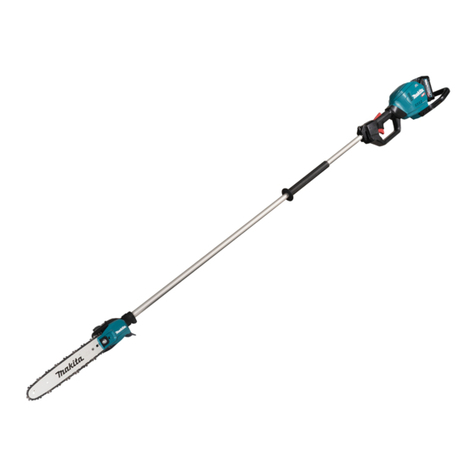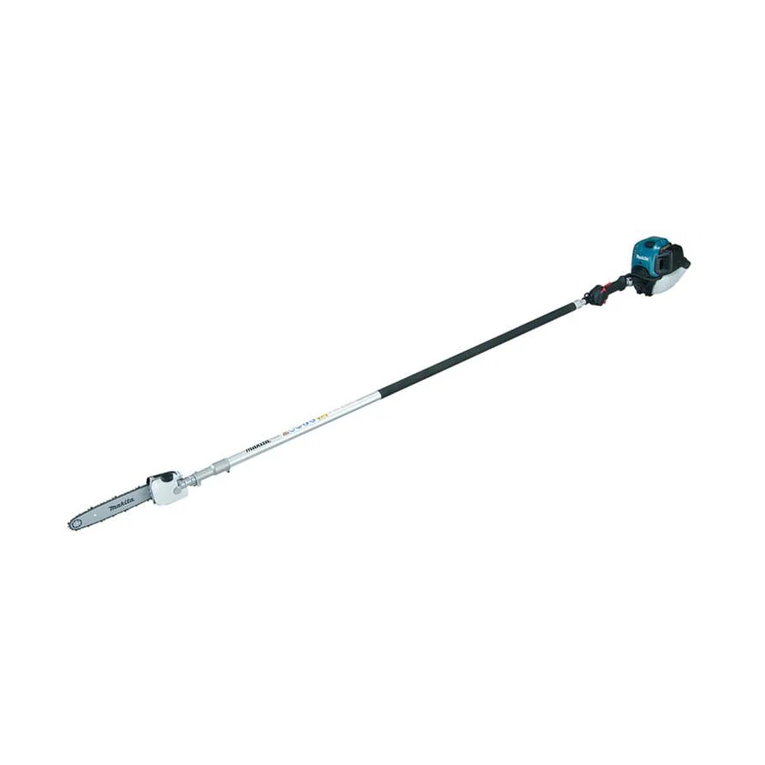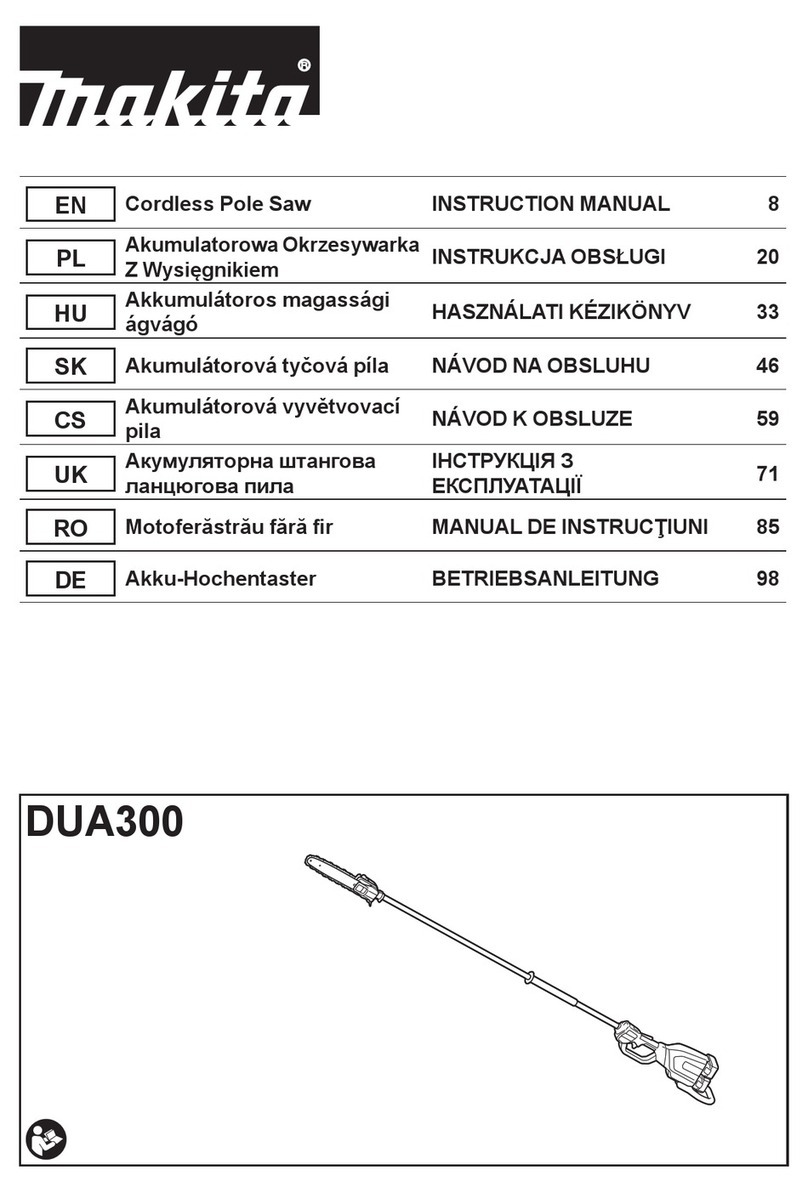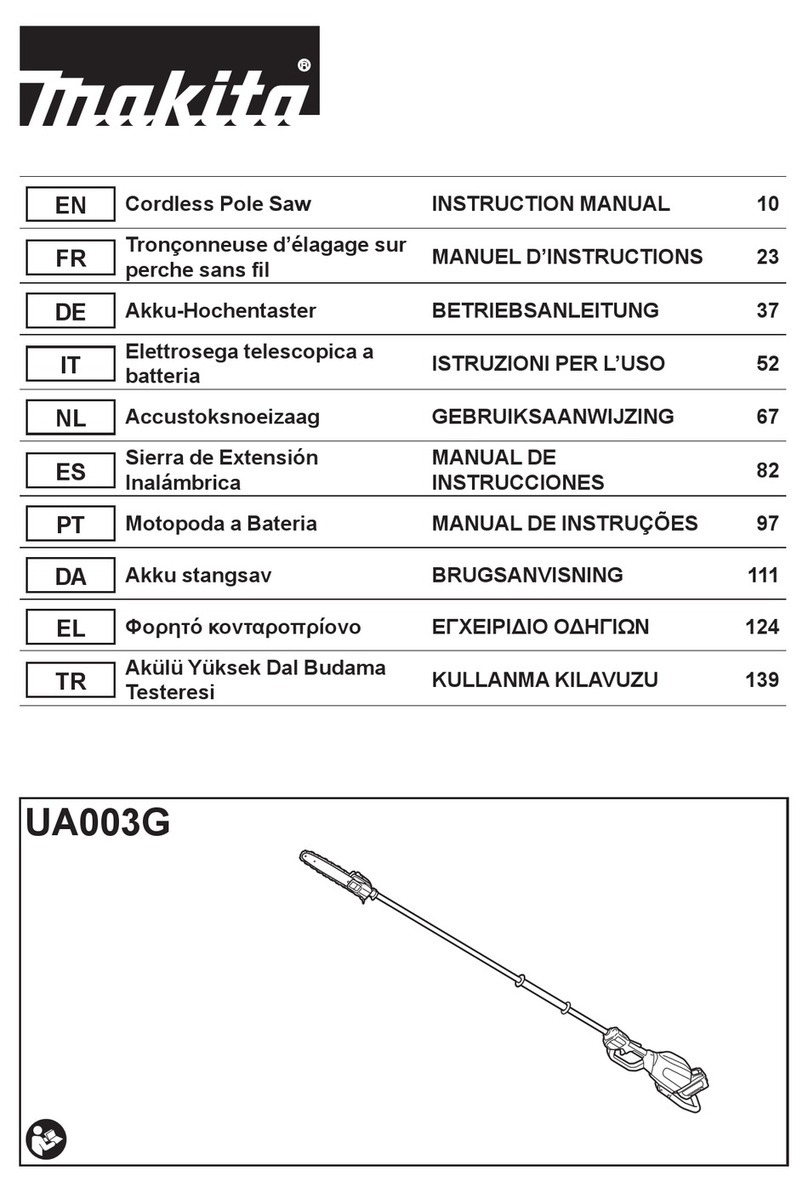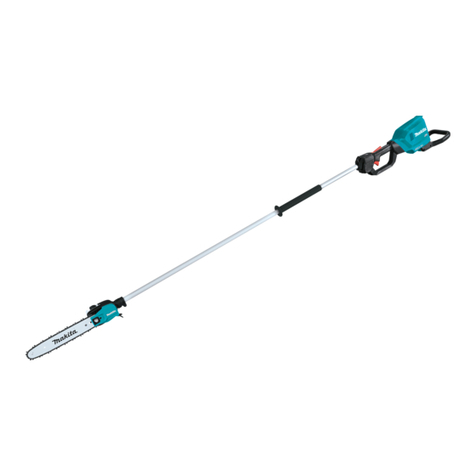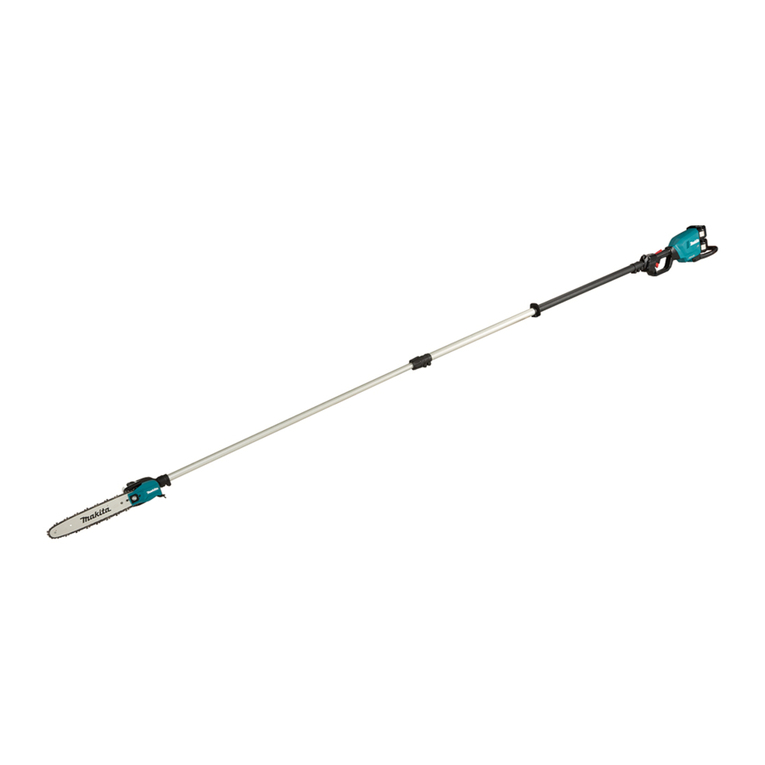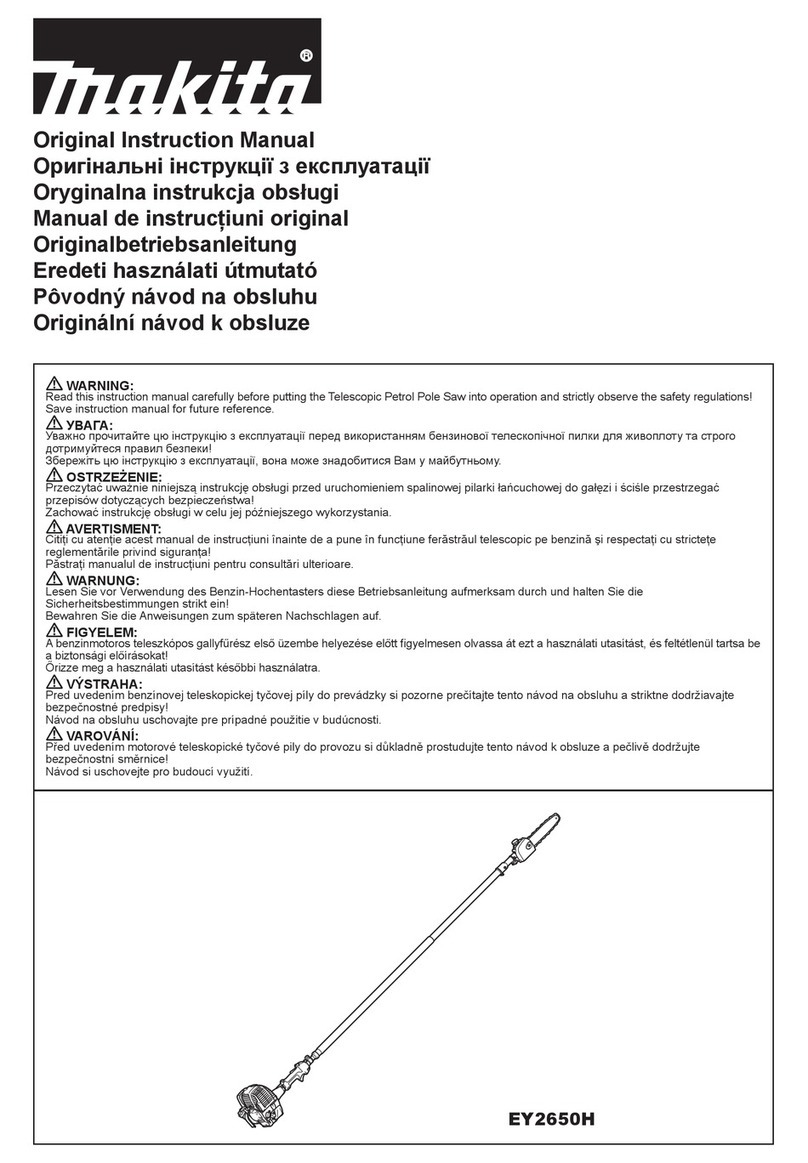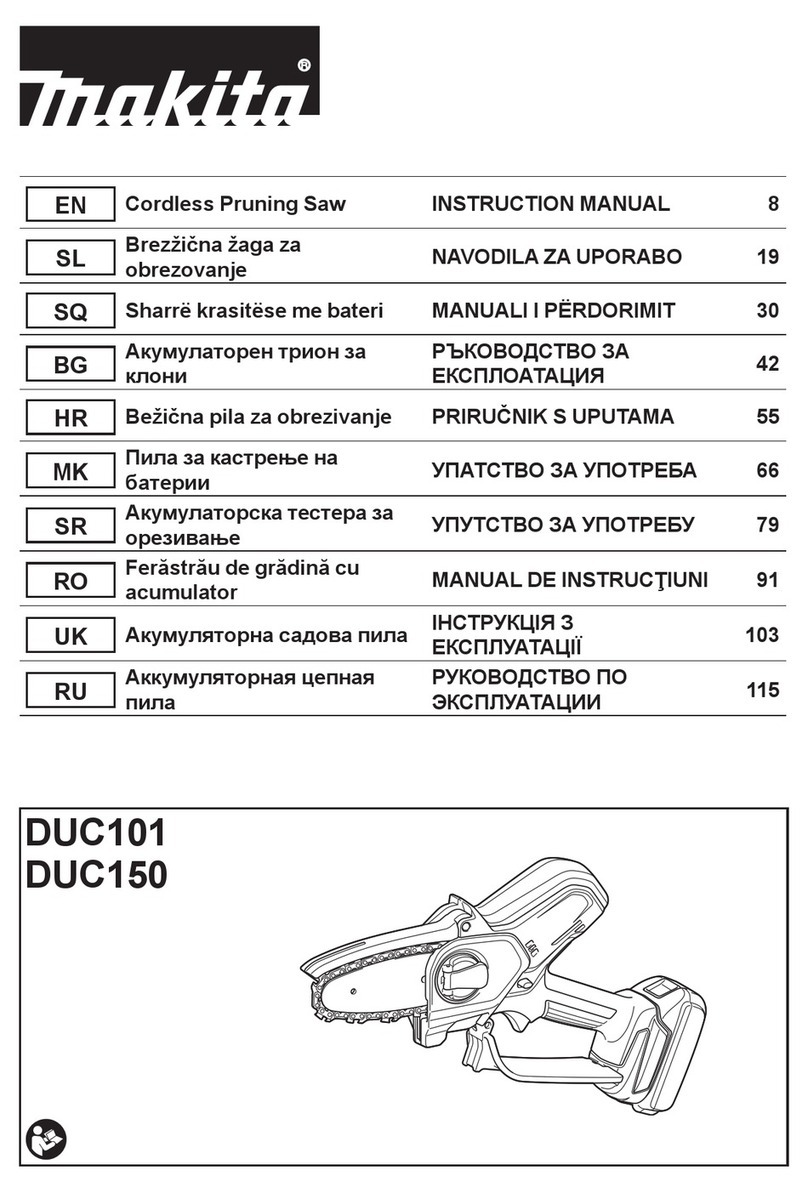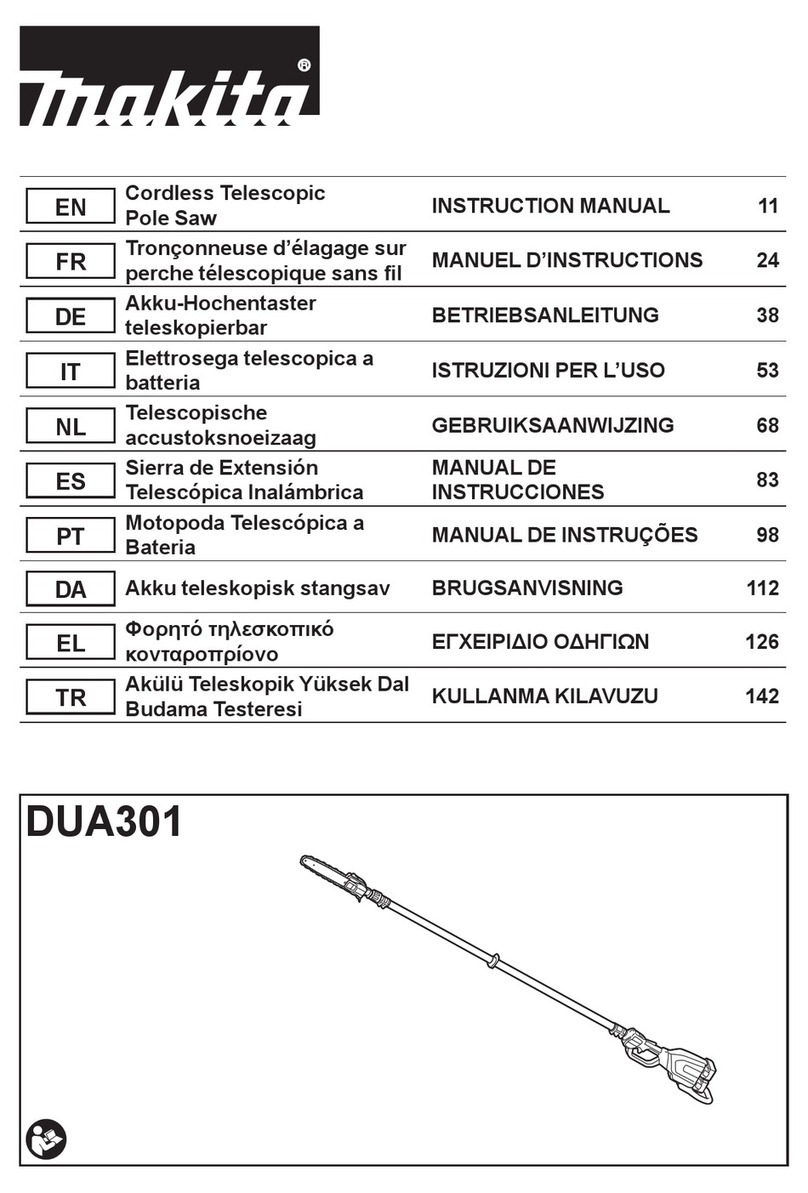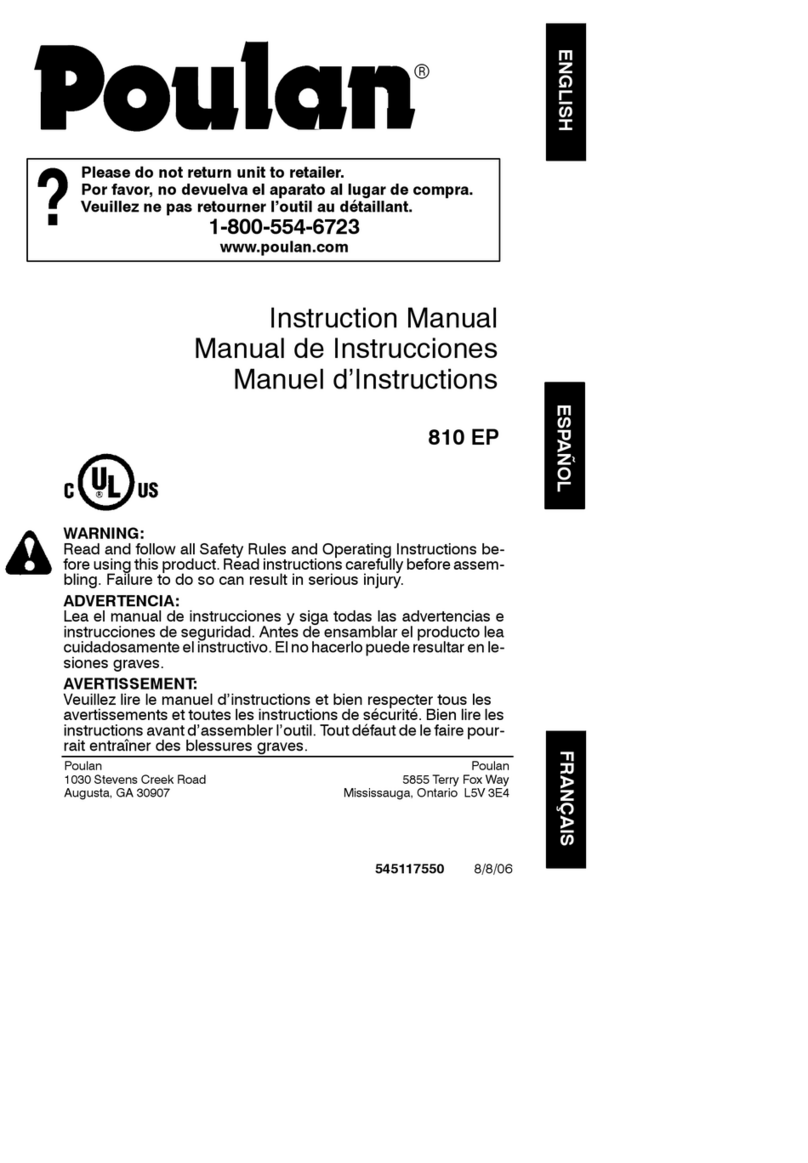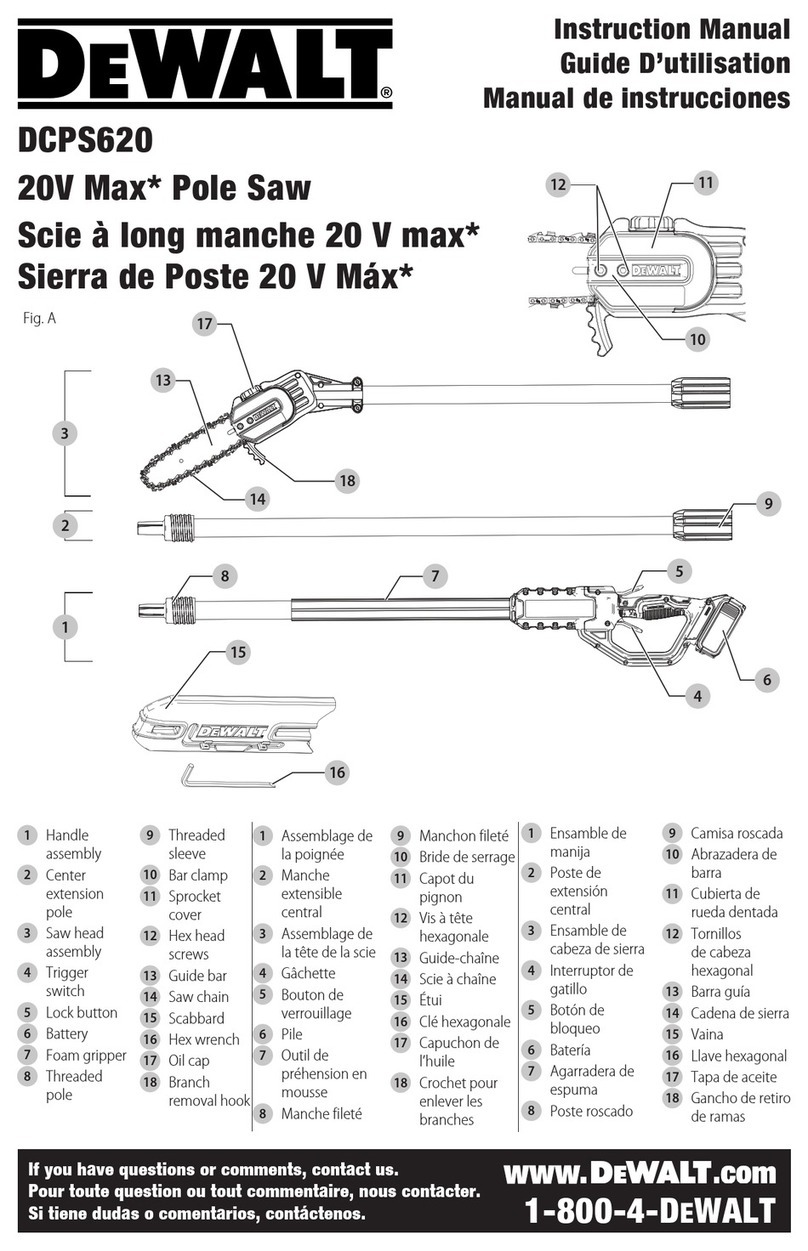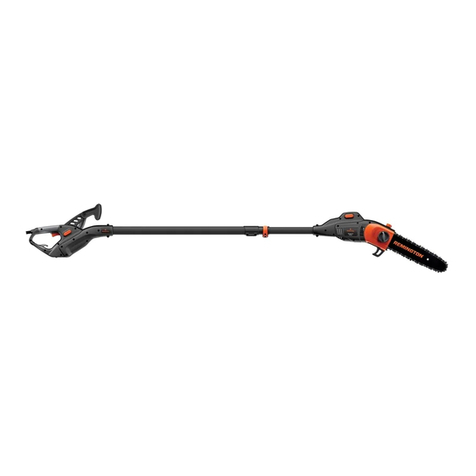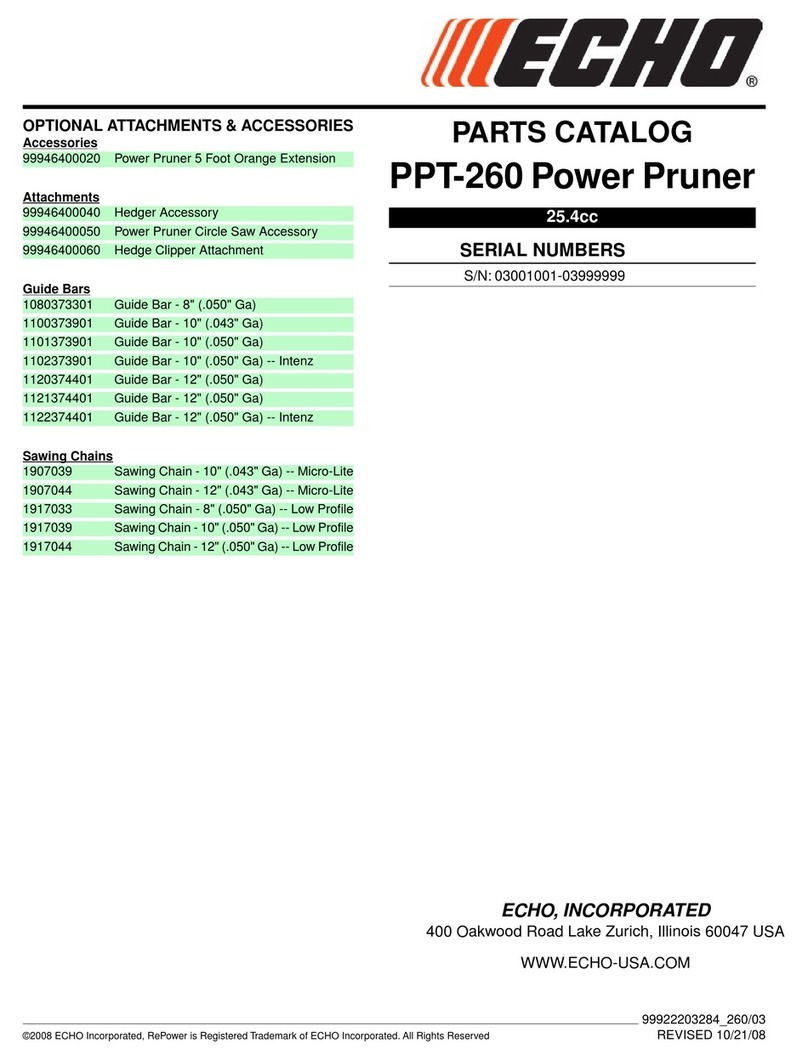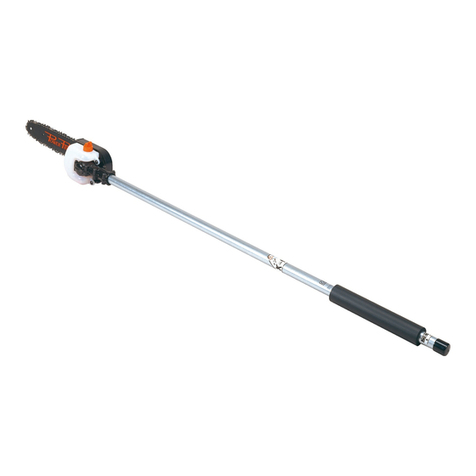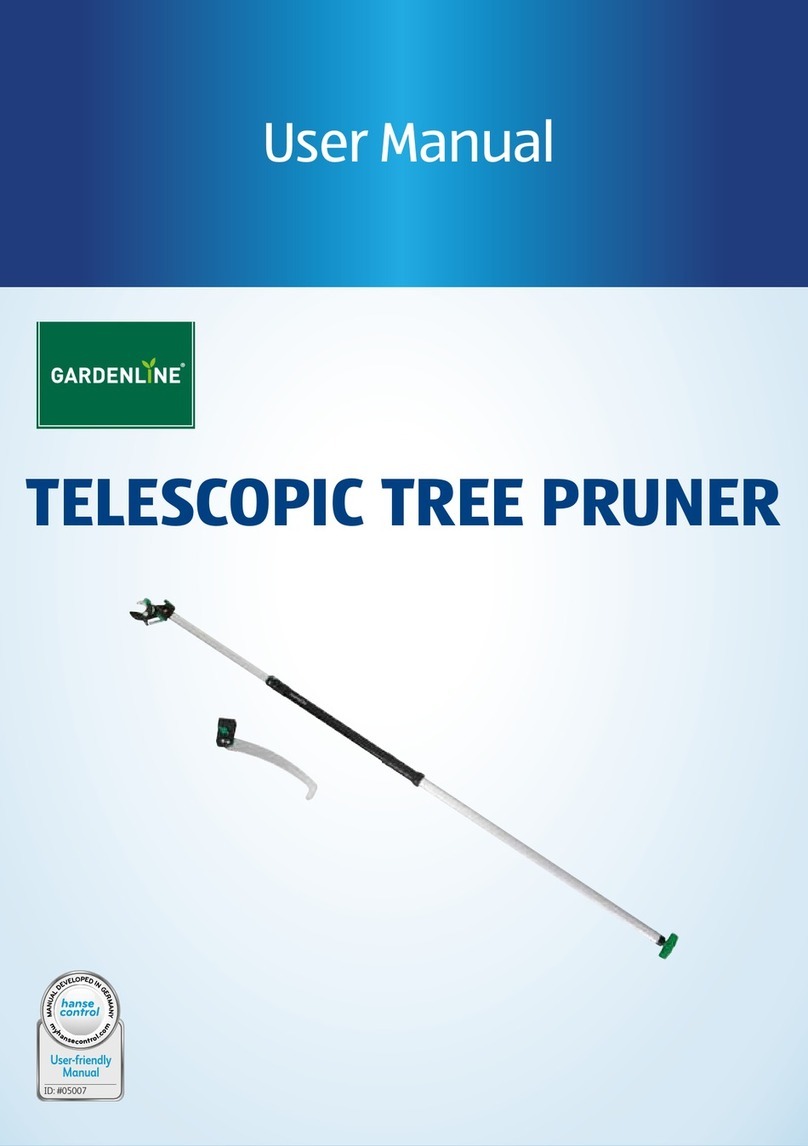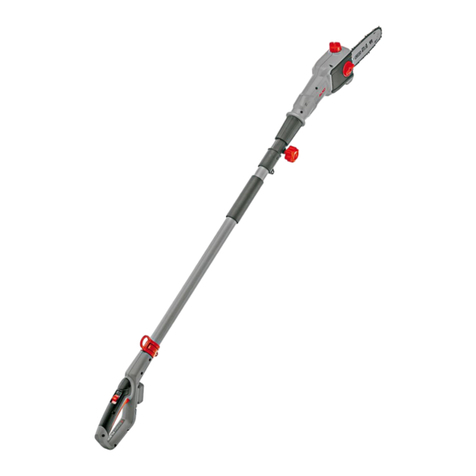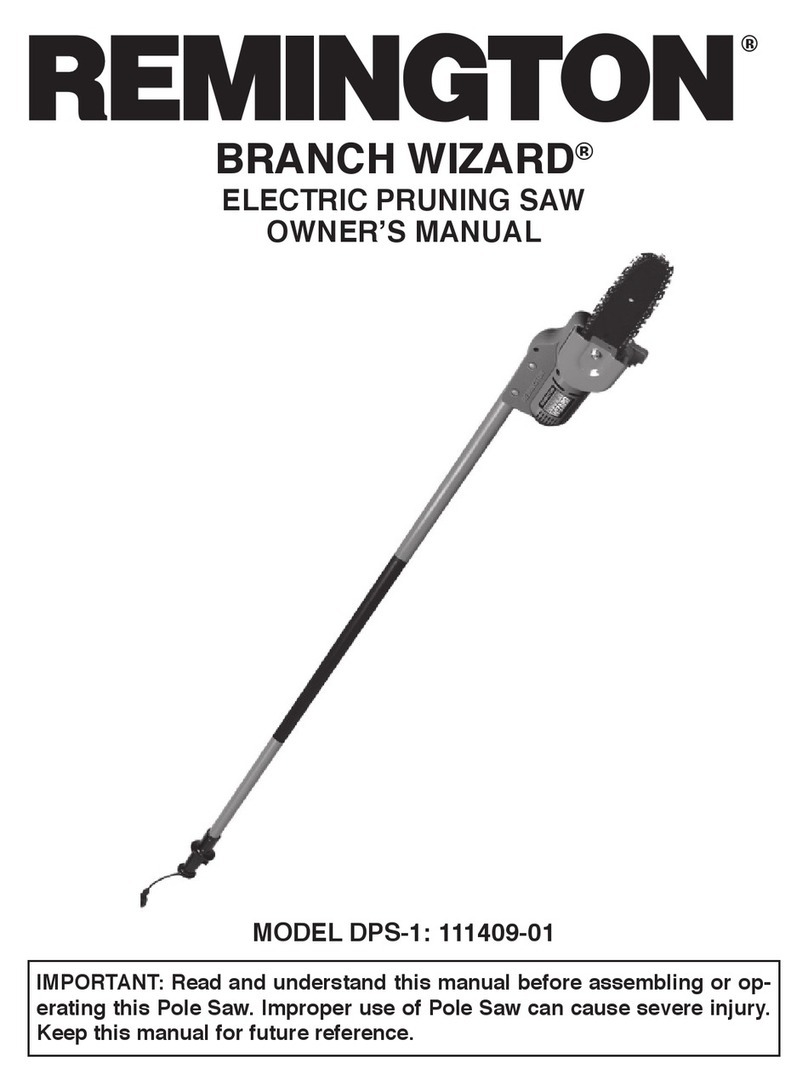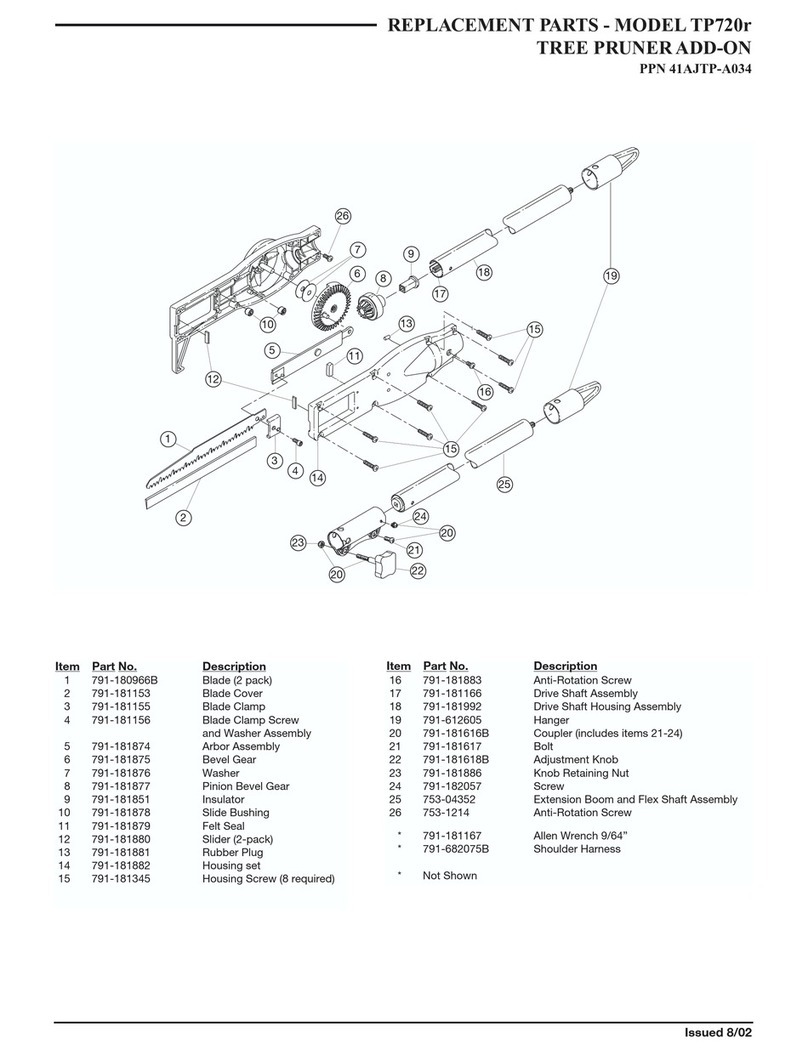
10 ENGLISH
ENGLISH (Original instructions)
SPECIFICATIONS
Model: DUA300
Overall length (without guide bar and attachment) 2,235 mm
Rated voltage D.C. 36 V
Net weight *1 6.2 kg
*2 6.1 - 7.4 kg
Standard guide bar length 300 mm
Recommended guide bar
length
with 90PX 250 - 300 mm
with 91PX 250 - 300 mm
Applicable saw chain type
(refer to the table below)
90PX
91PX
Standard sprocket Number of teeth 6
Pitch 3/8″
Chain speed 0 - 20 m/s
(0 - 1,200 m/min)
Chain oil tank volume 160 cm3
• Duetoourcontinuingprogramofresearchanddevelopment,thespecicationshereinaresubjecttochange
without notice.
• Specicationsmaydierfromcountrytocountry.
*1: Weight, with largest battery cartridge and empty oil tank, and without guide bar, chain, shoulder harness, and
attachment, according to EN ISO11680-1.
*2:Thelightestandheaviestcombinationofweight,accordingtoEPTA-Procedure01/2014.Theweightmaydier
depending on the attachment(s), including the battery cartridge.
Applicable battery cartridge and charger
Battery cartridge BL1820B / BL1830B / BL1840B / BL1850B / BL1860B
Charger DC18RC / DC18RD / DC18RE / DC18SD / DC18SE / DC18SF /
DC18SH / DC18WC
• Some of the battery cartridges and chargers listed above may not be available depending on your region of
residence.
WARNING: Only use the battery cartridges and chargers listed above. Use of any other battery cartridges
andchargersmaycauseinjuryand/orre.
Recommended cord connected power source
Portable power pack PDC01 / PDC1200
• The cord connected power source(s) listed above may not be available depending on your region of residence.
• Before using the cord connected power source, read instruction and cautionary markings on them.
Saw chain, guide bar, and sprocket combination
Saw chain type 90PX
Number of drive links 46
Guide bar Guide bar length 300 mm
Cutting length 296 mm
Pitch 3/8″
Gauge 1.1 mm
Type Sprocket nose bar
Sprocket Number of teeth 6
Pitch 3/8″


